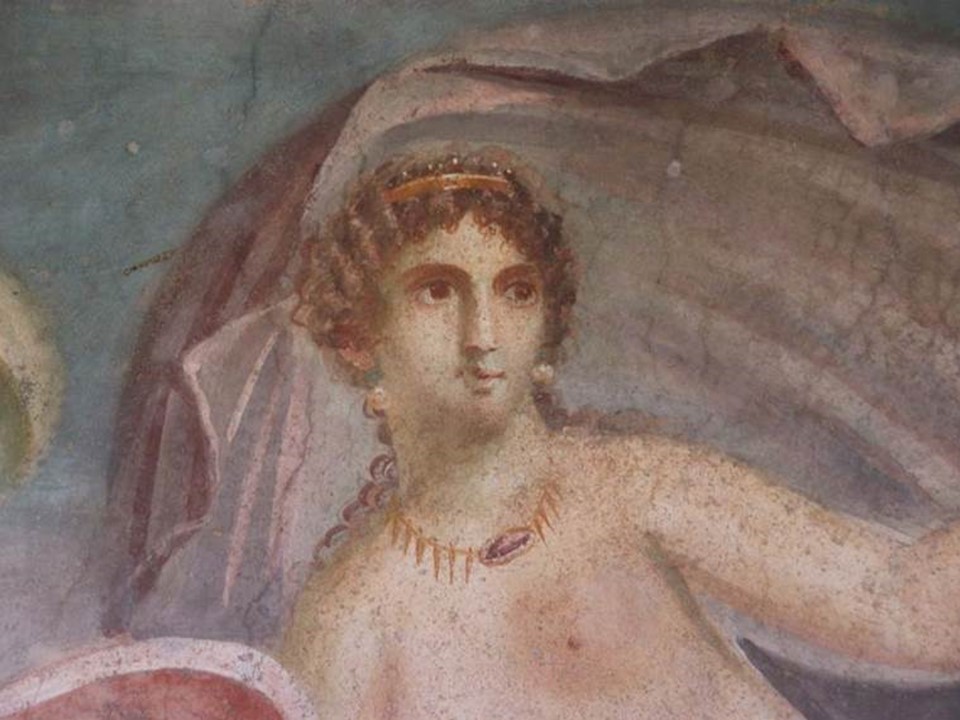
…Ah, goddess, when the spring / Makes clear its daytime, and a warmer wind / Stirs from the west, a procreative air, / High in the sky the happy-hearted birds, / Responsive to your coming, call and cry, / The cattle, tame no longer, swim across / The rush of river-torrents, or skip and bound / In joyous meadows; where your brightness leads, / They follow, gladly taken in the drive, / The urge, of love to come. So, on you move / Over the seas and mountains, over streams / Whose ways are fierce, over the greening leas, / Over the leafy tenements of birds, / So moving that in all the ardor burns / For generation and their kind’s increase… The amazing fresco of Venus in the House of Venus in the Shell inspired me to search for Roman Poems dedicated to the Goddess of beauty… and I “stumbled” upon Lucretius’s Hymn to Venus, the goddess of pleasure. https://newepicurean.com/lucretius-hymn-to-venus-and-the-defense-of-pleasure/ and https://www.youtube.com/watch?v=xuqPhR8QTZQ
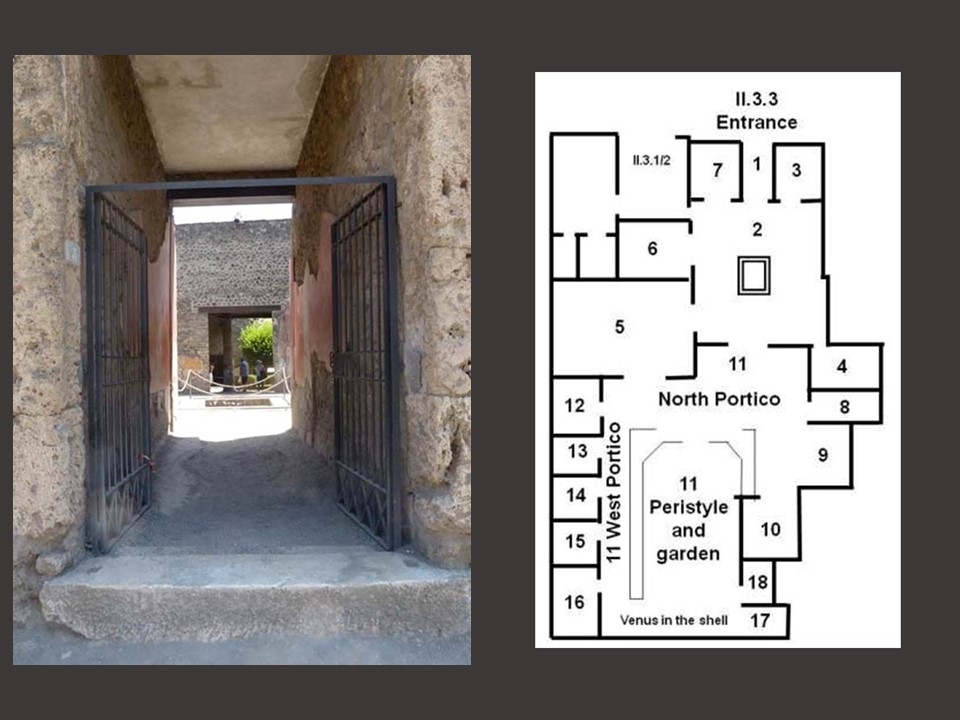
Ground Plan of the House of Venus in the Shell or House of the Marine Venus or House of D. Lucretii Satrii Valentes, Pompeii http://pompeiiinpictures.com/pompeiiinpictures/R2/2%2003%2003%20plan.htm
The Via dell’Abbondanza, one of Pompeii’s two Decumani Maximus, formed the main east-west axis which traversed the entire urban area of the city. Facing Via dell’Abbondanza, in Regio II of the city, near the Porta Sarno, the Amphitheatre and the Large Palaestra, lies a private property of particular interest, the House of Venus in the Shell (Insula 3), also known as House of the Marine Venus or House of D. Lucretii Satrii Valentes. Excavated between 1933-35, it was damaged by bombings during World War II in 1943, but was re-excavated and restored in 1952. https://sites.google.com/site/ad79eruption/pompeii/regio-ii/reg-ii-ins-3/house-of-venus-in-the-shell
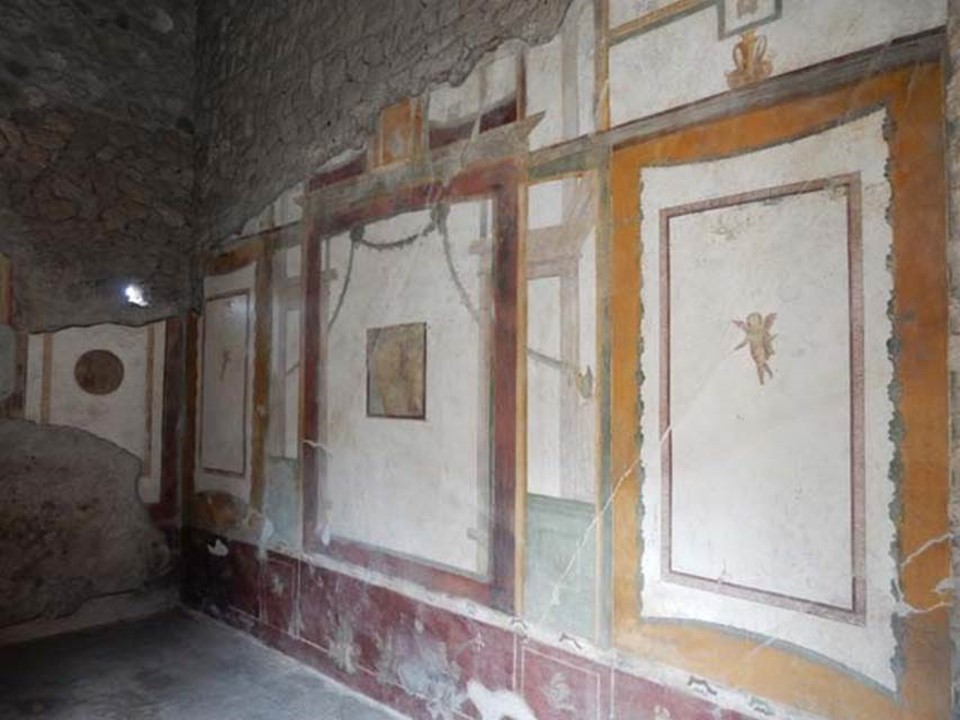
The House of Venus in the Shell has all the characteristics of a typical Pompeiian House. A narrow corridor (1) (fauces) beautifully decorated in the 3rd Pompeiian Style opens directly onto a square atrium (2) with a central impluvium. Both areas were intricately decorated with red or yellow painted panels with small medallions in the center to enhance the visual effect. Three cubicula face the atrium, the one in the south east corner (4) is decorated in the 3rd Pompeiian Style “with framed white panels separated by fantastic architectural views above a lower dark red frieze. The central panel of the south wall contains a badly faded mythological scene of Hermes and Dionysus. The side panels on the north wall contain floating figures while on the east are two portrait medallions.” https://sites.google.com/site/ad79eruption/pompeii/regio-ii/reg-ii-ins-3/house-of-venus-in-the-shell
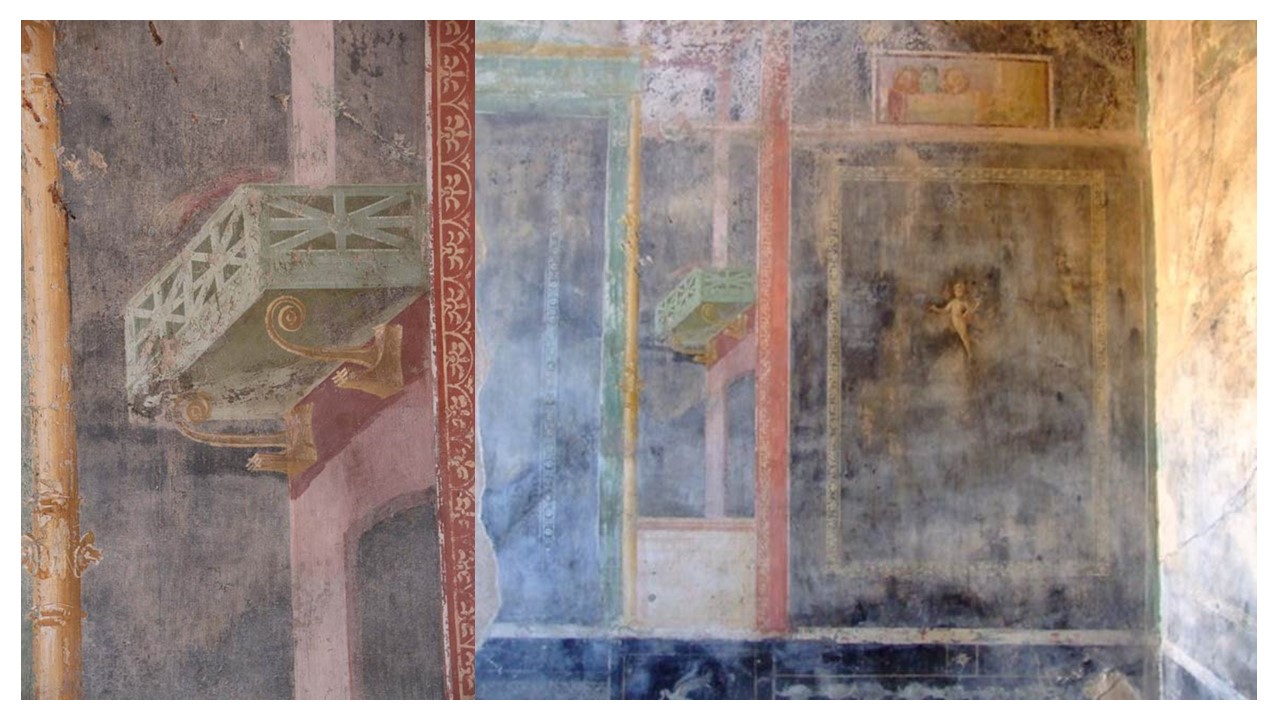
Two more interesting rooms open to the Atrium (2), a Triclinium (6) and a large Tablinium (5). The Triclinium (6) has vaulted ceilings and walls, painted in the 3rd Pompeian Style, with architectural themes framing floating figures within black panels, and on the uppermost part of the room’s decoration, small scenes and still lives. The Tablinum (5), “has lost most of its decoration but still impresses with its size. The tablinum has a second doorway on its south wall which opens onto the north side of the peristyle.” https://sites.google.com/site/ad79eruption/pompeii/regio-ii/reg-ii-ins-3/house-of-venus-in-the-shell
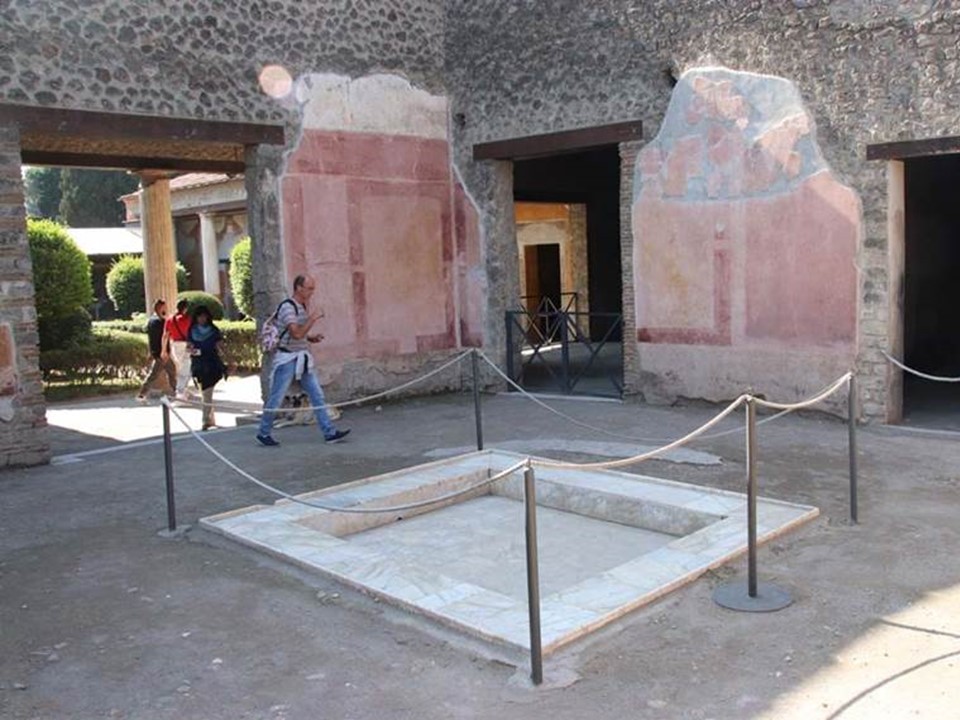
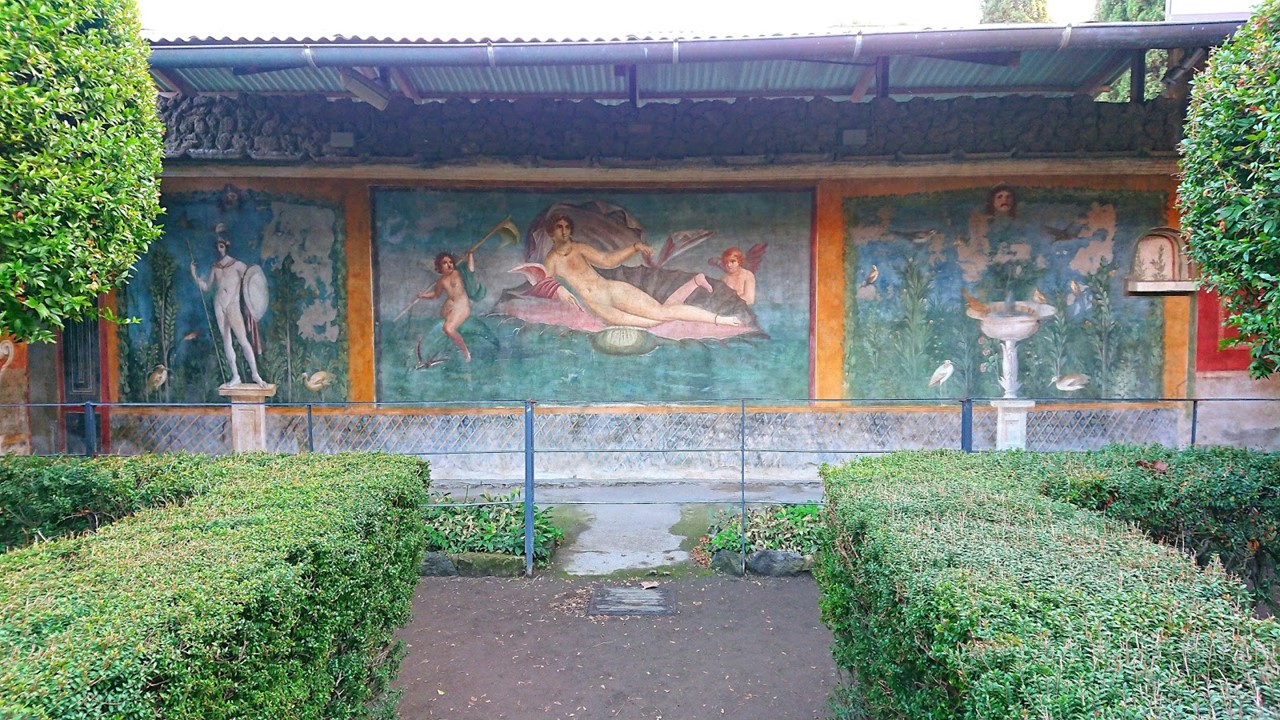
The nicest part of the House, the Peristyle area, develops around a lovely garden with 9 fluted columns of stuccoed brickwork (11). Rooms and Porticos, sumptuously decorated, once more, with frescoes in the 3rd Pompeiian Style, display interesting scenes that reveal almost impressionistic qualities. “On the rear wall (17) of the peristyle are three large framed frescoes each set on a blue background. The lefthand painting, is of the god Mars shown standing naked on a plinth while holding a lance and a shield. Around him the foliaged garden is teaming with birdlife. The central painting on the rear wall is of Venus lying in a conch shell with a cherub either side of her. The nymph on the left side of the painting is shown riding a dolphin while the one on the right supports the conch shell. The righthand painting is of flowers and birds drinking at a fountain. The fresco incorporates a niche painted with plants.” https://sites.google.com/site/ad79eruption/pompeii/regio-ii/reg-ii-ins-3/house-of-venus-in-the-shell
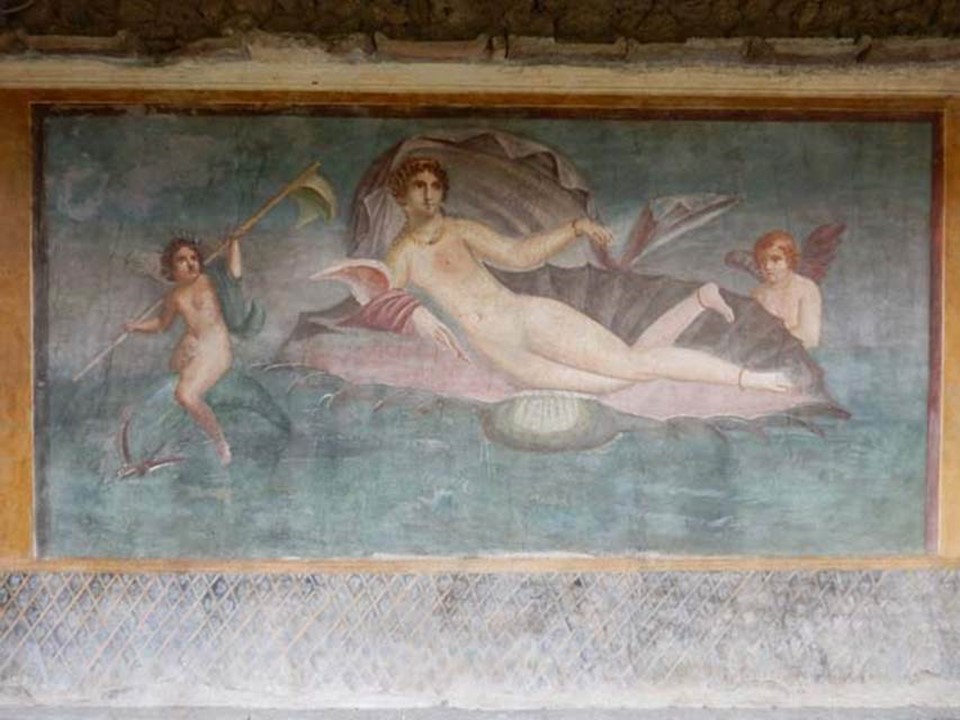
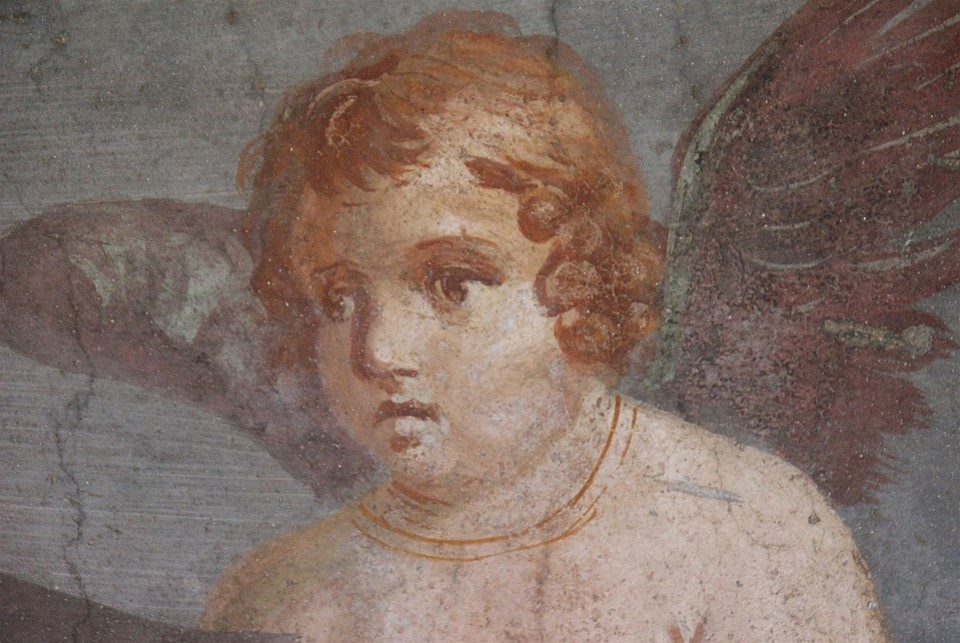
The star fresco in the House, after which the house, let’s not forget, was named, depicts Venus in the Shell. It portrays a large and striking depiction of the goddess Venus, naked but relaxed “giving no signs of modesty, yet no signs of overt sexuality,” reclining in a shell, swelling “sails” behind her, accompanied by a cortege of two Cherubs. This fresco may not be one of the finest discovered in Pompeii, but it is definitely eye-catching. Venus’s head of curly hair and pale skinned body, resplendent with gold jewels, “looking off into the distance seemingly without a worry in the world” create a stunning vision. The Cherubs’ look of curiosity and astonishment is a strike of ingenuity. The combination of aquamarine blue and plum-hued violet, cool and refreshing, is precious! Simply put… I love it!!! https://womeninantiquity.wordpress.com/2018/11/27/the-portrayal-of-venus-in-pompeian-frescoes/
For a student RWAP (Research-Writing-Art-Project), please… Check HERE!